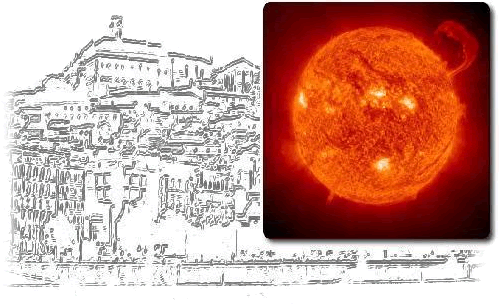|
|
|
|
|
|
|
|
|
|
|
|
|
Luís Olavo de Toledo Fernandes, Mr. - MSc |
|
Centro de Rádio Astronomia Astrofísica Mackenzie, Escola de Engenharia, Universidade Presbiteriana Mackenzie, São Paulo, SP, Brasil |
|
|
|
|
|
|
|
Session 1 - Speaker |
|
Comparative Study of Solar Bursts at Sub-THz Frequencies |
|
L. O. T. Fernandes (1,2), P. Kaufmann (1,2), E. Correia (1,3), C. G. Giménez de Castro (1); A. Marun (4), P. Pereyra (5), J.-P. Raulin
(1), A. B. M. Valio (1); Affiliations: 1 - Centro de Rádio Astronomia e Astrofísica Mackenzie, Escola de Engenharia, Universidade Presbiteriana Mackenzie,
São Paulo, SP, Brasil; 2 - Centro de Componentes Semicondutores, Universidade Estadual de Campinas, Campinas, SP, Brasil; 3 - Instituto Nacional de Pesquisa
Espacial (INPE), São José dos Campos, SP, Brasil; 4 - Instituto de Ciencias Astronómicas, de la Tierra y del Espacio (CONICET), San Juan, Argentina;
5 - Complexo Astronómico El Leoncito (CONICET), San Juan, Argentina. |
|
|
|
Solar burst radio emissions at sub-THz frequencies have revealed a new
spectral component with fluxes increasing with frequency, apparently simultaneous
but separated from the well known emissions at microwaves. The intriguing THz
emissions bring challenges for interpretation. Observations were obtained at
frequencies centered at 0.2 and 0.4 THz by the Solar Submm-w Telescope (SST) at El
Leoncito, at 2550 m altitude in the Argentina Andes. We discuss the quality these
observations which is poor compared to microwaves and mm-waves. Principal
uncertainties arise from approximate estimates of variable atmosphere transmission,
and to the irregular three SST 0.2 THz beam shapes used in the partially overlapping
beams technique to determine the burst position, especially in weak bursts. Good to
fair atmosphere transmission conditions at El Leoncito are found for less than 205
days/year at 0.2 THz and 180 days/year 0.4 THz. The two principal factors lead to
flux uncertainties of the order of ± 25%. In 2012-2013 they were complemented by 45 GHz
and 90 GHz radio-polarimeters, also operated at El Leoncito. Sub-THz bursts were
compared to microwaves obtained by RSTN (2.695, 4.995, 8.8, and 15.4 GHz). Complete
radio spectra were derived, when possible, from the GHz to the sub-THz range of
frequencies. The selected bursts were compared to GOES soft X-ray bursts, and at
other space or ground-based observations, when available. Preliminary results have
shown that 5 out of 13 bursts exhibited 0.4 THz fluxes larger than 0.2 THz; 2
impulsive bursts were observed at 0.4 THz only. The observed 0.4 THz fluxes ranged
from 50-200 SFU; all sub-THz bursts were associated to 9 GOES M-class and to 4
X-class bursts. Two of these bursts were also observed at 30 THz, exhibiting fluxes
1-2 orders of magnitude larger than at microwaves, mm-w and sub-THz frequencies. |
|
|
|
|
|
|
|




 









 |



